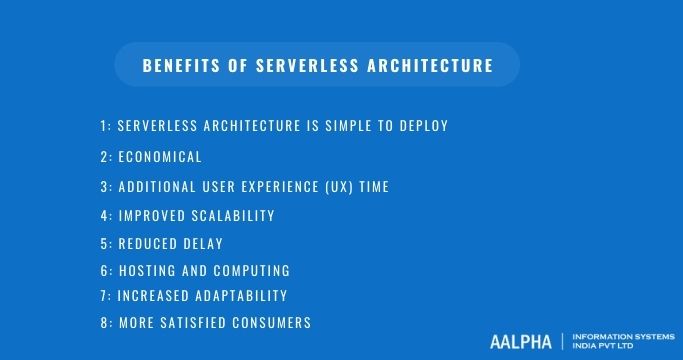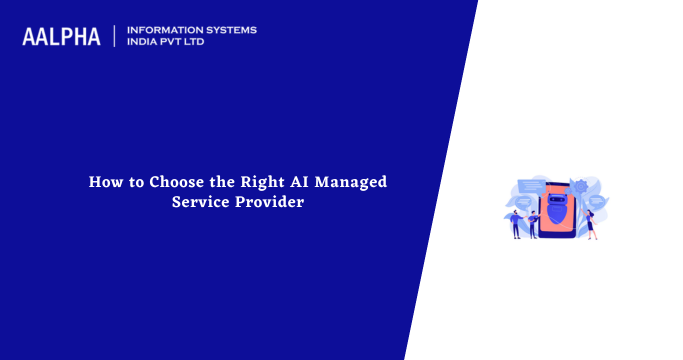If you’ve heard the phrase “serverless architecture” but are unsure of its meaning, you’re not alone. This term (buzzword? ) has been growing in popularity over the last several years, and it does not seem to be slowing down anytime soon. More cloud providers are promoting serverless architectures for organizations. So, you’ve arrived here thinking, “why”? No problem: we’ll walk you through eight incredible serverless features in this post.
There are several advantages to using a serverless architecture in your organization. If you’re ready to take the leap, learn why a serverless architecture may be the right fit for you.
By 2025 the global serverless architecture market size is expected to reach $21,988.07 Mn.
What is Serverless Architecture, then?
“Serverless” technology divides into two distinct camps, each of which discusses its application architecture.
Back-End as a Service, or BaaS, is the first. This is true for every application with a significant portion of its backend on the cloud. Typically, this is monitored and maintained by a third party.
FaaS, or Function as a Service, is on the opposite end of the spectrum. FaaS includes an application that executes portions of its code through event triggers. A
Now that we’ve deconstructed the serverless architecture use cases let’s go further. The following are eight advantages of using a serverless architecture in your project.
Benefits of Serverless Architecture
-
Serverless architecture is simple to deploy
A serverless architecture might be ideal for your application. If you need to deploy an application quickly, serverless computing may be the way to go. Instead of weeks or months, you may launch an app in hours or days. This is because you are not responsible for infrastructure. You may concentrate on the code and instantly release it. Scalability is automatic, and there are no provisioning requirements.
-
Economical
Going serverless is an excellent method to save money. That is because you are contracting out the management of servers, databases, and some logic. Besides financial savings, serverless computing consumes less processing power and human resources. There is no reason you should have to design your server from the ground up. Because serverless manages the infrastructure, you can concentrate on the necessary server-side code. There are instances when the cost is not much less.
-
Additional User Experience (UX) Time
If your application is customer-facing, keep in mind that consumers are unconcerned with infrastructure. They are not privy to all of the code you have created for your back end. They will only notice the front-end code. Moreover, they place a higher premium on the user interface and experience. Therefore, why not direct resources toward things that contribute to consumer satisfaction?
-
Improved scalability
If you want to be the next Google, you should assess if your server can handle such a demand. Choosing a serverless architecture enables you to adapt to changing circumstances. If your app succeeds and increases in popularity, it will be simple to stage adjustments to suit the expansion. If not, then there has been no damage done! There is no reason to build infrastructure without determining if it is necessary. That is a significant gain.
-
Reduced delay
Serverless architectures often feature global access points. This implies that it will be simpler to manage people from all over the globe. In this manner, you may grow your application without compromising its performance. Consider the following scenario: you host a server in a typical manner on the West Coast.
-
Hosting and computing
Businesses that own data centers or their servers must keep their servers operational. Consider all the massive data centers and the physical resources required to construct them. Consider the energy required to keep them operating. The advantage of serverless architecture is that you may purchase servers on-demand. This may help lower the resources required to maintain diverse businesses operational.
-
Increased adaptability
It’s much simpler to get started with serverless than conventional approaches. As a result, adopting serverless enables you to develop more quickly. When you see instant concrete results, you may move on to the next assignment. You may now begin developing your next feature or microservice. When limitations do not constrain you, the serverless architecture gives this advantage. Additionally, pivoting is simpler in instances requiring reorganization.
-
More satisfied consumers
The serverless design has the potential to result in more satisfied consumers. A corporation capable of rapidly developing new servers and releasing new features ensures that consumers have access to these new services. Nobody wants to wait a year for minor repairs. You no longer must worry about infrastructure with serverless. You may rapidly deliver logic and features that enhance the user experience.
Is serverless computing the way forward?
Choosing a request-driven, serverless architecture may be the best course of action. It may potentially be a terrible fit for your business, depending on the kind of application you’re developing. Make certain that you plunge into serverless with an understanding of the components and size of your application. If serverless seems to be a good match, there is no reason not to try it.
Connect with cloud application development company to know more!





Share This Article:
Written by:
Muzammil K
Muzammil K is the Marketing Manager at Aalpha Information Systems, where he leads marketing efforts to drive business growth. With a passion for marketing strategy and a commitment to results, he's dedicated to helping the company succeed in the ever-changing digital landscape.
Muzammil K is the Marketing Manager at Aalpha Information Systems, where he leads marketing efforts to drive business growth. With a passion for marketing strategy and a commitment to results, he's dedicated to helping the company succeed in the ever-changing digital landscape.